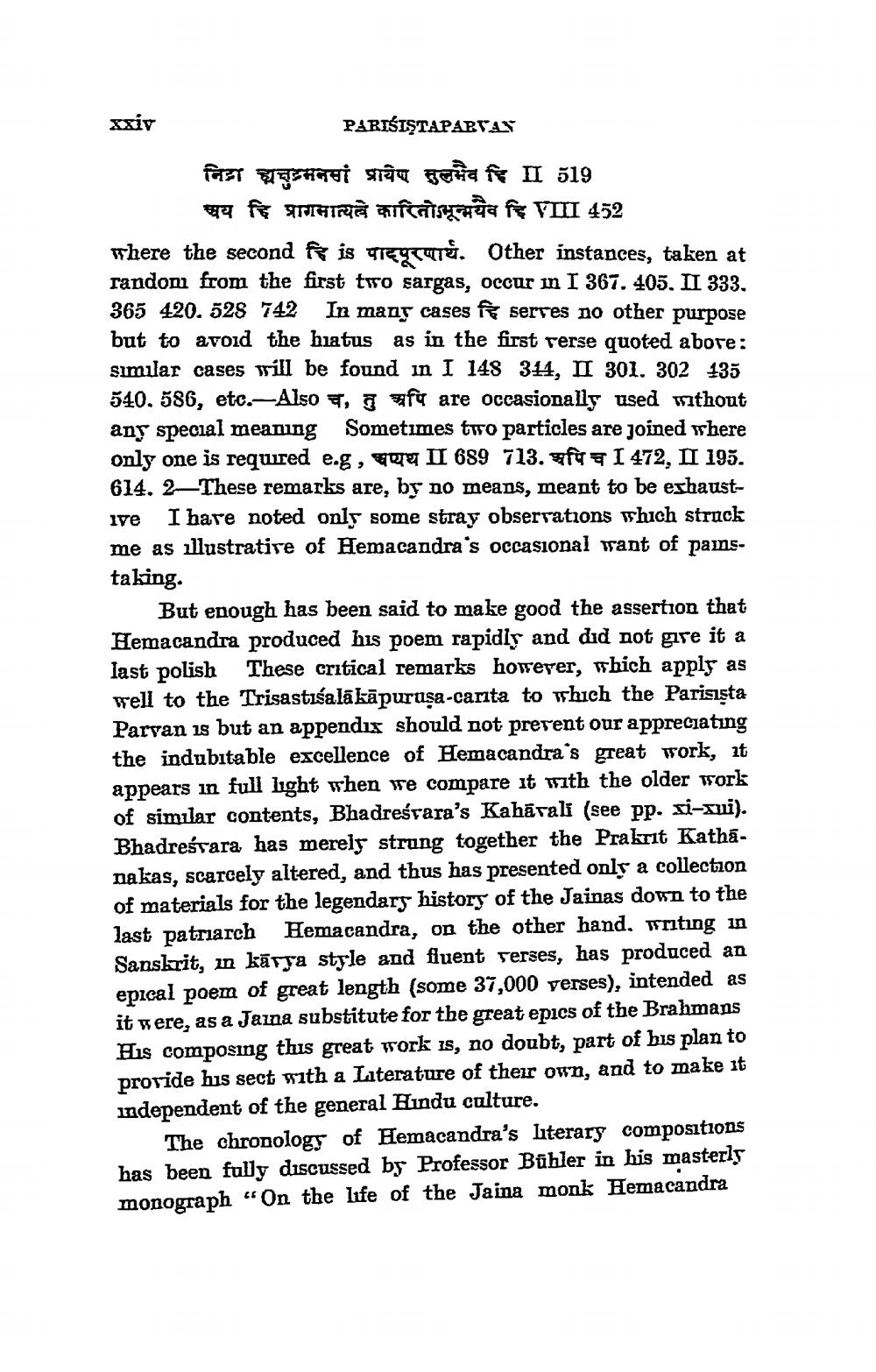________________
xxiv
PARIŚIŞTAPARTAS FET EERST STêa gente f II 519
899 ff tar HIFCFSH F VIII 452 There the second fe is gregore. Other instances, taken at random from the first two sargas, occur in I 367. 405. II 333. 365 420. 528 742 In many cases serres no other purpose but to avoid the hiatus as in the first rerse quoted abore: similar cases will be found in I 148 344, II 301. 302 135 540. 586, etc.-Also , , ufq are occasionally used without any special meaning Sometimes two particles are joined where only one is required e.g, quy II 689 713. I 472, II 195. 614. 2These remarks are, by no means, meant to be eshaustive I hare noted only some stray obserrations which struck me as illustratire of Hemacandra's occasional tant of pamstaking.
But enough has been said to make good the assertion that Hemacandra produced his poem rapidly and did not gire it a last polish These critical remarks however, which apply as well to the Trisastiśalākāpuruşa-canta to thich the Parisista Paryan is but an appendix should not prevent our appreciating the indubitable excellence of Hemacandra's great work, it appears in full light when we compare it with the older work of similar contents, Bhadreśrara's Kahārali (see pp. si-qui). Bhadreśvara has merely strung together the Prakrit Kathanakas, scarcely altered, and thus has presented only a collection of materials for the legendary history of the Jainas down to the last patriarch Hemacandra, on the other hand, writing in Sanskrit, in kārya style and fluent verses, has produced an epical poem of great length (some 37,000 verses), intended as it were, as a Jazna substitute for the great epics of the Brahmans His composing this great work zs, no doubt, part of his plan to provide his sect sth a Literature of their own, and to make it independent of the general Hindu culture.
The chronology of Hemacandra's Literary compositions has been fully discussed by Professor Bühler in his masterly monograph "On the life of the Jaina monk Hemacandra




